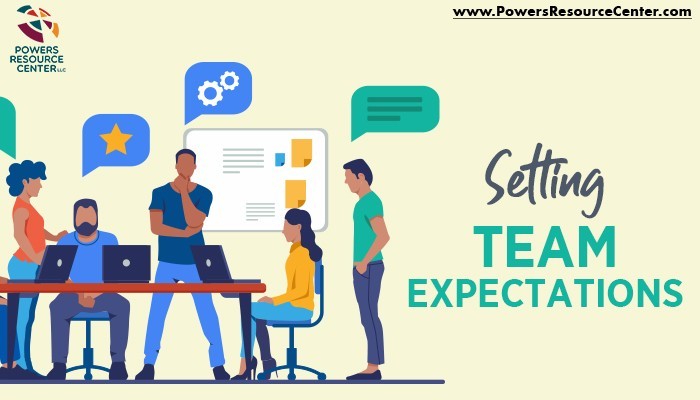It seems like the simplest thing in the world – setting team expectations. It’s Manager 101, right? So why then is there so much confusion – from both leaders and team members – about what is expected of them? A recent Gallup study found nearly half of all U.S. employees don’t know what’s expected of them at work.
In our years of working with teams and leaders, we’ve noticed that there are right and wrong ways to set team expectations. So take our advice with the following tips for setting expectations.
- You can’t overcommunicate. Seriously – communicate clearly early and often, and use all your communications channels – face-to-face, email, chat, presentations, etc. When you think something is obvious, that’s the time to double down and unambiguously communicate what is expected, being as specific as possible. Empower your team to make decisions, but don’t leave them guessing. You know what happens when you assume ;-)
- It’s not just for new hires. It’s true that setting team expectations during the onboarding process is critical, but it doesn’t end there. When your feedback blindsides your team members, it usually means that you didn’t establish clear expectations from the beginning.
- Focus on the ‘what,’ not the ‘how.’ No one likes a micromanager, so focus on the desired outcome – the behaviors that are expected, the vision of the final project or the due date for completion. This allows employees to determine the path they want to take, but you all arrive at the same place. If you spell out every step for them, employees will feel stifled and unengaged. This is especially true for remote workers.
- Understand the difference between team and individual. On any team, you have foundational expectations or core values. These are things like respect, integrity, or having sensitivity to everyone’s needs and concerns. Then there are individual expectations that are unique to an employee and align with their growth and goals. Know the difference and communicate with the team or individuals accordingly.
- Play it S.M.A.R.T. Just like goals, expectations should be S.M.A.R.T. — Specific, Measurable, Attainable, Realistic and Time-Based. Employees need to know why the goals are in place and what happens when they are not met. Pro tip: Keeping goals consistent with the company mission is a fast track to success.
- Clearly define YOUR (leader) expectations. Ask your team what they expect of you and let them know your expectations of yourself. Commit to providing them the resources and materials they need to do their jobs. This reinforces esprit de corps and when everyone knows what’s expected, your team will thrive.
- Accountability for all. Expectations are pointless if they aren’t backed with commitment and accountability. Team members are free to do their jobs – and meet their expectations – when they understand that everyone on the team knows what to do and will be held accountable if they fall short. And that includes you, as the team leader.
Need some help setting team expectations? PRC can help your leaders establish and communicate expectations clearly. Contact us today at https://www.powersresourcecenter.com/lets-connect/
Related Posts
-
5 Quick Quarantine Team-Building Ideas
Team-building activities usually get a bad rap – and it’s often deserved. Just think of the teams subjected to doing trust falls or baring their souls in a drum circle. But in this time of quarantine, most teams could use a little building. The stress…
-
Creating a Culture of Connection
What does it mean to be connected? If your mind went straight to reliable wifi, you’re not alone. In this digital age, our definition of connection is less and less about human connection and much more about a wireless connection. As human beings, connection is…
-
Creating a Culture of Connection
What does it mean to be connected? If your mind went straight to reliable wifi, you’re not alone. In this digital age, our definition of connection is less and less about human connection and much more about a wireless connection. As human beings, connection is…






